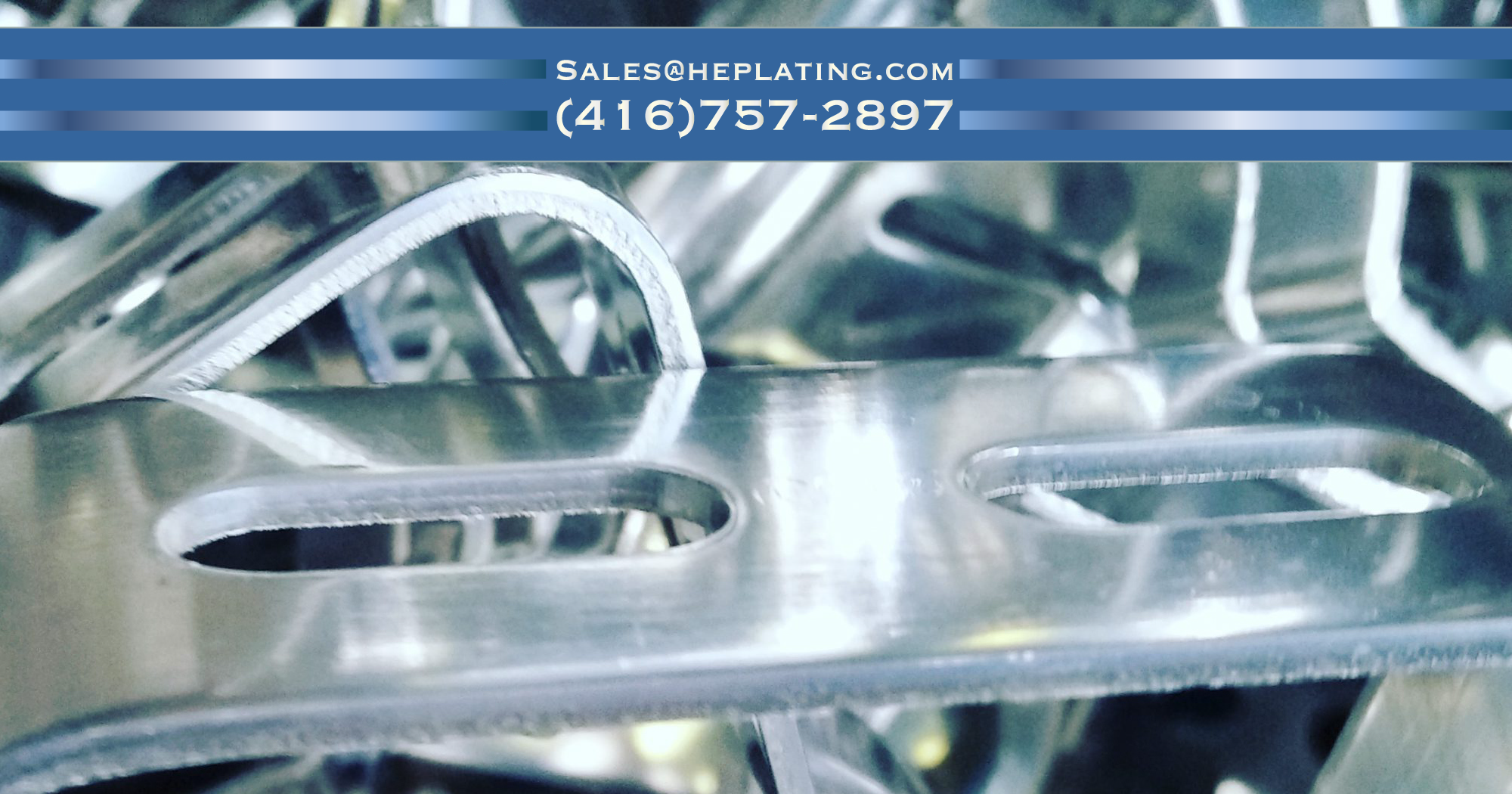Toronto’s Passivation Service
Stainless Steel Passivating, passivation is available at the Toronto plating shop. The process differs depending on specification type but most commonly involves a standard degreasing and cleaning process followed by a nitric acid bath. Stainless steel passivate order sizes at H&E plating are typically small to medium sized and are done by hand. Please allow lead time for large bulk orders or heavy individual parts.
This link is a great resource for passivation specifications
CLICK THIS LINK

If you have any questions about Stainless Steel Passivating, or for a quote, please contact H&E Plating Ltd in Toronto at:
Phone: (416)757-2897
Fax: (416)757-8970
Email: h_e.plating@on.aibn.com
Stainless steels are corrosion-resistant by nature, which might suggest that passivating them would be unnecessary. However, stainless steels are not completely impervious to rusting. One common mode of corrosion in corrosion-resistant steels is toronto plating when small spots on the surface begin to rust because grain boundaries or embedded bits of foreign matter (such as grinding swarf) allow water molecules to oxidize some of the iron in those toronto spots despite the alloying chromium. This is called rouging. Some grades of stainless steel are especially resistant to rouging; parts made from them may therefore forgo any passivation step, depending on engineering decisions.[9]
Passivation processes are generally controlled by industry standards, the most prevalent among them today being ASTM A 967 and AMS 2700. These industry standards generally list several passivation processes that can be used, with the choice of specific method left to the customer and vendor. The “method” is either a nitric acid-based passivating bath, or a citric acid-based bath. The various ‘types’ listed under each method refer to differences in acid bath temperature and concentration. Sodium dichromate is often required as an additive to promote oxidation in certain ‘types’ of nitric-based acid baths.
Common among all of the different toronto specifications and types are the following steps: Prior to passivation, the object must be cleaned of any contaminants and generally must undergo a validating test to prove that the surface is ‘clean.’ The object is then placed in an acidic passivating bath that meets the temperature and chemical requirements of the method and type specified between customer and vendor. (Temperatures can range from ambient to 140 degrees Fahrenheit, while minimum passivation times are usually 20 to 30 minutes). The parts are neutralized using a bath of aqueous sodium hydroxide, then rinsed with clean water and dried. The passive surface is validated using humidity, elevated temperature, a rusting agent (salt spray), or some combination of the three. However, proprietary passivation processes exist[10] for martensitic stainless steel, which is difficult to passivate, as microscopic discontinuities can form in the surface of a machined part during passivation in a typical nitric acid bath.[11] The passivation process removes exogenous iron,[12] creates/restores a passive oxide layer that prevents further oxidation (rust), and cleans the parts of dirt, scale, or other welding-generated compounds (e.g. oxides).[13][14]
It is not uncommon for some aerospace manufacturers to have additional guidelines and regulations when passivating their products that exceed the national standard. Often, these requirements will be cascaded down using Nadcap or some other accreditation system. Various testing toronto methods are available to determine the passivation (or passive state) of stainless steel. The most common toronto plating methods for validating the passivity of a part is some combination of high humidity and heat for a period of time, intended to induce rusting. Electro-chemical testers can also be utilized to commercially verify passivation.


